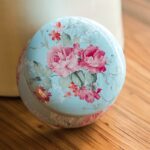Making candles can be a rewarding and creative hobby, allowing individuals to add a personal touch to their living spaces. However, it is important to acknowledge that candle making carries potential risks and dangers that should not be overlooked. Understanding and addressing these hazards is crucial in order to ensure a safe and enjoyable candle-making experience.
In this article, we will explore the various dangers associated with candle making and provide insights into how to mitigate them. From handling hot wax and flames to identifying fire hazards, we will discuss the importance of safety precautions and protective gear. Additionally, we will delve into the significance of choosing non-flammable materials, as well as understanding the impact of chemical exposure and allergies due to fragrances and dyes.
One major concern while making candles is the risk of overheating and burn injuries. We will outline preventative measures that can be taken to avoid accidents in this regard. Furthermore, ventilation and air quality play a vital role in minimizing inhalation risks and potential health issues arising from candle making.
For beginners who are new to candle making, we have included essential safety tips that should be followed for a secure experience. Moreover, emergencies can occur unexpectedly, so we will also cover what steps should be taken in case of accidental fires or burns during the candle-making process.
The Risks of Handling Hot Wax and Flames
Handling hot wax and flames during the candle-making process can pose numerous risks if proper safety precautions are not taken. It is important for candle makers to understand these risks and take necessary steps to protect themselves and their surroundings. This section discusses the potential dangers of handling hot wax and flames, as well as the safety precautions and protective gear that should be utilized.
One of the primary risks when handling hot wax is the potential for burns. Wax can reach high temperatures during the melting process, posing a risk of thermal burns if it comes into contact with unprotected skin. In addition, direct exposure to flames from burning candles can also lead to burns. To prevent these injuries, it is essential for candle makers to wear appropriate protective gear such as heat-resistant gloves, long-sleeve clothing, and closed-toe shoes.
Another risk associated with handling hot wax is fire hazards. If the melting wax or an open flame comes into contact with flammable materials such as fabric or paper, it can quickly ignite and cause a fire. Therefore, it is crucial to create a safe workspace by removing any flammable items from the vicinity. Additionally, having a fire extinguisher nearby and knowing how to use it effectively is vital in case of an accidental fire.
| Risks | Safety Precautions | Protective Gear |
|---|---|---|
| Potential for burns | – Wear heat-resistant gloves
| Heat-resistant glovesLong-sleeve clothingClosed-toe shoes |
| Fire hazards | – Remove flammable items from workspace
| Fire extinguisher |
Choosing the Right Materials
When it comes to candle making, one of the most crucial aspects to consider is the choice of materials. Using non-flammable options is of utmost importance in order to prevent accidents and ensure a safe candle-making experience. This section will explore why choosing the right materials is essential and provide some guidelines on selecting non-flammable options.
Using non-flammable materials in candle making significantly reduces the risk of fires and other related hazards. When candles are lit, they create an open flame that can easily ignite flammable substances. Therefore, it is crucial to choose materials that are resistant to catching fire and do not pose a risk during the candle-making process or when the candles are being used.
One key material to consider is the type of wax used. There are various types available, including paraffin wax, soy wax, beeswax, and palm wax. Among these options, some are more flammable than others. For example, paraffin wax is derived from petroleum and is known for being highly flammable. On the other hand, soy wax and beeswax have higher flash points and therefore offer better fire resistance.
In addition to choosing non-flammable waxes, it is important to consider other materials used in candle making such as wicks, containers, colors, and fragrances. Wicks should be made from natural fibers such as cotton or hemp as they burn more slowly and produce less soot compared to synthetic wicks.
Containers should be heat-resistant or made from materials like glass or metal that do not catch fire easily. Colors and fragrances should also be carefully chosen for their safety properties, ensuring they do not contain flammable additives.
| Material | Key Considerations |
|---|---|
| Wax | Select options with higher flash points, such as soy wax or beeswax. |
| Wicks | Use natural fibers like cotton or hemp to reduce burning speed and soot production. |
| Containers | Choose heat-resistant materials like glass or metal that do not easily catch fire. |
| Colors and Fragrances | Prioritize options that do not contain flammable additives. |
By following these guidelines and carefully selecting non-flammable materials, candle makers can enjoy their hobby with peace of mind, knowing they have taken important steps to ensure safety. Making informed choices about materials is an essential aspect of balancing creativity and safety in the candle-making process.
Common Fire Hazards
Candle making can be a fun and rewarding hobby, but it’s important to understand and mitigate the potential fire hazards that come with it. Identifying common fire hazards in the candle-making process is essential for ensuring the safety of both yourself and your surroundings. By being aware of these risks, you can take appropriate measures to prevent accidents and protect yourself from harm.
One common fire hazard in candle making is the improper handling of hot wax and flames. The hot wax used in the process can cause severe burns if not handled with care. It’s crucial to use protective gear such as heat-resistant gloves and aprons to minimize the risk of burns. Additionally, always work in a well-ventilated area away from flammable materials to reduce the chance of accidental fires.
Another potential risk during candle making is using flammable materials. Using non-flammable options is essential for maintaining a safe environment. When choosing materials such as wicks, containers, or decorations, opt for those specifically designed for candle making that are made from non-flammable materials, such as cotton wicks or glass containers.
Furthermore, it’s important to be cautious when working with fragrance oils and dyes. These substances may contain volatile compounds that could lead to chemical exposure or allergies. Always handle fragrances and dyes carefully, following proper instructions, and consider wearing gloves or masks if needed.
Chemical Exposure and Allergies
Candle making involves using various fragrances and dyes to enhance the aesthetic appeal and scent of the candles. However, it is important to understand the potential dangers associated with chemical exposure and allergies that can arise from these additives. Fragrances and dyes used in candle making may contain harmful ingredients that can have adverse effects on our health.
When choosing fragrances and dyes for candle making, it is crucial to opt for products that are specifically designed for this purpose. Avoid using oils or perfumes meant for personal use as they may not be safe when heated. Look for fragrance oils that are labeled as safe for candle-making and do not emit harmful toxins when burned.
It is also important to be aware of any potential allergies or sensitivities you or your loved ones may have. Many fragrance oils and dyes contain synthetic chemicals that can trigger allergic reactions in some individuals. If you or anyone around you has a history of allergies, consider using natural alternatives such as essential oils or plant-based colorants instead.
Furthermore, it is recommended to handle fragrances and dyes with caution by wearing protective gear such as gloves and goggles. This will help minimize direct contact with the chemicals and reduce the risk of skin irritation or accidental ingestion. Additionally, ensure proper ventilation in your workspace to prevent inhalation of toxic fumes released during the candle-making process.
Overheating and Burn Injuries
Overheating and burn injuries are significant risks associated with candle making. The process of melting wax involves working with high temperatures, which can easily cause accidents if proper precautions are not taken. In this section, we will discuss some preventative measures that can help individuals avoid accidents and minimize the risk of overheating and burn injuries during candle making.
Temperature control
One of the key factors in preventing overheating and burn injuries is maintaining proper temperature control. It is essential to heat the wax to the recommended temperature specified by the manufacturer. Using a thermometer specifically designed for candle making can ensure accurate temperature readings. Moreover, it is important to monitor the temperature constantly throughout the melting process.
Protective gear
Wearing suitable protective gear can provide an additional layer of safety when working with hot wax and flames. This includes heat-resistant gloves, long-sleeved clothing made from natural fibers, and closed-toe shoes. These items can protect your skin from direct contact with hot surfaces or splashes of molten wax.
Proper workspace
Creating a safe workspace is crucial in preventing accidents during candle making. Make sure your work area is clean, organized, and free from clutter. Keep flammable materials away from heat sources and ensure there is sufficient space for ventilation around your melting pot or heating device.
Fire extinguisher within reach
Having a fire extinguisher within reach is essential for quick response in case of accidental fires during candle making. Ensure that you have a fully charged and appropriate type of fire extinguisher nearby, such as a Class B or multipurpose one that can handle liquid fuel fires like those involving flammable liquids or waxes.
By following these preventative measures, candle makers can significantly reduce the risk of overheating and burn injuries while enjoying their craft. It’s important to prioritize safety to ensure a pleasant and accident-free candle-making experience. However, accidents can still occur despite taking precautions. Therefore, it is essential to be prepared and knowledgeable about handling emergencies, which will be discussed in the next section of this article.
Ventilation and Air Quality
When it comes to candle making, ensuring proper ventilation is crucial in minimizing the risk of inhalation and potential health issues. In this section, we will explore the importance of good air quality, potential harmful substances in candles, and tips for effectively ventilating your workspace.
The Importance of Good Air Quality
Good air quality is essential for maintaining a healthy environment while making candles. When melting wax, various compounds are released into the air that can be harmful if inhaled in large quantities or over extended periods. These compounds include volatile organic compounds (VOCs) and particulate matter, which can irritate the respiratory system, cause headaches, dizziness, and even contribute to long-term health issues.
Potential Harmful Substances in Candles
Most commercially available candles contain additives such as fragrance oils, dyes, and stabilizers that can emit toxins when burned. Additionally, some types of waxes can release harmful chemicals like benzene and toluene when heated. These substances have been linked to respiratory problems and are known carcinogens.
Many candle enthusiasts prefer using natural alternatives such as soy or beeswax candles because they tend to have a lower level of toxicity compared to paraffin wax candles. However, it’s important to note that even natural ingredients may emit some amount of soot or VOCs when burned.
Tips for Effective Ventilation
To minimize exposure to potentially harmful substances while making candles:
- Work in a well-ventilated area: It’s recommended to set up your candle-making station near an open window or use a fan to circulate fresh air throughout the room.
- Use exhaust fans or ventilation systems: If possible, install exhaust fans that directly vent the fumes emitted during candle making outside.
- Wear a respirator or mask: A respirator with a carbon filter can help filter out harmful particles and chemicals from the air you breathe while making candles.
- Avoid working in confined spaces: Ensure that your workspace has enough space and airflow to prevent the build-up of fumes.
By following these tips, candle makers can minimize the risk of inhaling harmful substances and ensure a safer and healthier environment for their candle-making activities. Remember, ventilation is an essential aspect of candle making that should not be overlooked for both personal safety and overall well-being.
Safety Tips for Beginners
Candle making can be a fun and creative hobby, but it is important to prioritize safety throughout the process. Whether you are just starting out or have some experience in candle making, following essential guidelines is crucial for a safe candle-making experience. Here are some important safety tips that beginners should keep in mind:
- Educate Yourself: Before diving into the world of candle making, take the time to research and educate yourself about the process. Learn about the potential dangers involved, safety precautions to take, and best practices to follow. There are many online resources, tutorials, and books available that can provide valuable information on how to make candles safely.
- Use Quality Materials: It is essential to choose high-quality materials for your candle making projects. Invest in non-flammable options like heat-resistant containers or molds, wicks made of natural materials such as cotton or hemp, and fragrance oils that are specifically formulated for candle making. Using subpar or flammable materials can increase the risk of accidents and fire hazards.
- Follow Instructions Carefully: When it comes to making candles, always follow instructions precisely. Each step of the process plays a role in ensuring your safety and the quality of the final product. Avoid taking shortcuts or improvising unless you are confident in your knowledge and skills.
- Work in a Well-Ventilated Area: Proper ventilation is crucial during candle making to minimize the risk of inhaling harmful fumes or smoke. Always work in a well-ventilated area such as near an open window or use a fan to create airflow. This will help maintain good air quality and reduce any potential health issues associated with chemical exposure.
- Use Protective Gear: Safety should be a priority when handling hot wax and flames. Protect yourself by wearing appropriate gear such as heat-resistant gloves, long sleeves, closed-toe shoes, and safety goggles if needed. These simple protective measures can greatly reduce the risk of burns or any other injuries during the candle-making process.
By following these essential guidelines, beginners can ensure a safe and enjoyable candle-making experience. Remember to prioritize safety at all times and never hesitate to seek professional guidance or assistance if needed.
Handling Emergencies
Accidental fires or burns can happen even with the most careful candle-making practices. It is essential to know how to handle these emergencies to ensure your safety and that of those around you. In this section, we will discuss what steps to take in case of accidental fires or burns during candle making.
If a fire occurs, the first and most important step is to stay calm. Panicking can lead to irrational decisions and prevent you from handling the situation effectively. Remember that your safety is the top priority, so if the fire becomes uncontrollable, do not hesitate to evacuate the premises and call emergency services.
To extinguish a small fire, have a fire extinguisher on hand specifically designed for flammable liquids, as it may be more effective than water in putting out a wax fire. Aim the extinguisher at the base of the flames and sweep back and forth until they are completely extinguished. If you don’t have a fire extinguisher readily available, smothering the flames with a non-flammable blanket or use sand or baking soda can also be effective.
In case of burn injuries, it’s crucial to treat them immediately. Run cool water over the burn for about 10-15 minutes to help alleviate pain and reduce swelling. Avoid applying ice directly to the burned area as it may cause further damage. Cover any blisters with a sterile non-stick bandage or clean cloth and seek medical attention if necessary.
Handling emergencies can be overwhelming, but being prepared and knowing how to respond appropriately can make all the difference in ensuring your safety during candle making. Remember that prevention is key, so always prioritize practicing safe candle-making techniques and having safety measures in place before any accidents occur.
Final Thoughts
Candle making can be a fun and fulfilling hobby that allows individuals to express their creativity while also creating beautiful scented candles. However, it is important to remember that there are potential dangers associated with this craft. Throughout this article, we have explored the various risks and hazards involved in candle making, from handling hot wax and flames to the dangers of chemical exposure and overheating.
With these potential risks in mind, it is crucial to prioritize safety when engaging in the art of candle making. This means taking necessary precautions such as using protective gear like gloves and goggles when working with hot wax or flames. It also involves choosing non-flammable materials for your candles and being aware of common fire hazards in the process.
In addition, it’s essential to consider the impact of fragrances and dyes on chemical exposure and allergies. Opting for natural fragrance oils and dyes can help minimize any potential health risks. Proper ventilation is also crucial for maintaining good air quality in your work area to prevent inhalation issues.
As beginners in the world of candle making, there are several safety tips that should be followed for a safe experience. These include carefully reading instructions, never leaving candles unattended, keeping flammable items far away from flame sources, and having fire safety equipment readily available.
Lastly, knowing how to handle emergencies is vital in ensuring your safety during candle making accidents. In case of accidental fires or burns, it is important to have a plan in place and know what steps to take for immediate action.
Ultimately, while candle making may have its dangers, by balancing creativity with safety measures you can enjoy this hobby without fear. By following these guidelines and maintaining an awareness of potential hazards, you can create beautiful candles while keeping yourself and those around you safe.
Frequently Asked Questions
Do you need ventilation when making candles?
Ventilation is essential when making candles. The process of melting wax, adding fragrance oils or dyes, and pouring it into molds releases various chemical compounds into the air. These compounds can include volatile organic compounds (VOCs) such as benzene and toluene, which can be harmful when inhaled in high concentrations.
Adequate ventilation helps to dissipate these fumes and maintain a healthy environment during candle making. Opening windows, using exhaust fans, or working in a well-ventilated room are all effective ways to ensure proper airflow and minimize exposure to potentially harmful substances.
Should you wear a mask when making candles?
Wearing a mask is recommended when making candles, especially if you work with fragrances or dyes that emit strong odors. While not all homemade candle-making materials are highly toxic, certain chemicals released during the process can irritate the respiratory system or cause allergic reactions in sensitive individuals.
A mask acts as a barrier against inhaling airborne particles, including fine dust from the wax or larger droplets released by fragrances or dyes. It’s best to use a mask specifically designed for this purpose, such as a respirator with appropriate filters that offer protection against both particulates and vapors.
Are homemade candles less toxic?
Homemade candles have the potential to be less toxic than commercially manufactured candles if proper care is taken during their creation. When making candles at home, you have control over the ingredients you use and can choose options that minimize toxicity. By selecting high-quality natural waxes like soy or beeswax instead of paraffin wax (which is derived from petroleum), you reduce the release of hazardous chemicals like benzene into the air when the candle burns.
Additionally, opting for natural fragrance oils instead of synthetic ones can further reduce toxin exposure while still enjoying pleasing scents in your homemade candles. Nonetheless, it’s still important to follow safety guidelines, use proper ventilation, and handle candle-making materials responsibly to ensure your homemade candles are as safe and non-toxic as possible.

Welcome to my candle making blog! In this blog, I will be sharing my tips and tricks for making candles. I will also be sharing some of my favorite recipes.





